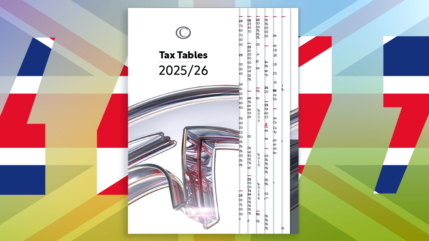Thousands of people are drifting in blissful ignorance towards large tax bills. Are you one of them?
A few years ago the government introduced a new rule aimed at limiting the appeal of pension saving for high earners. Known as the Tapered Annual Allowance (TAA), the idea was simple enough:
- If your annual income exceeds £150,000 then your maximum annual tax-relievable pension contribution allowance falls by £1 for every £2 that you’re over.
- The standard annual allowance of £40,000 is tapered down to the minimum £10,000 by the time your income reaches £210,000.
- Pension contributions exceeding the TAA are not tax relievable and will be subject to a tax charge, meaning that excess contributions could ultimately be taxed twice – once on the way into the pension and again on the way out.
The Problem
The precise method for determining whether you will suffer a tax charge as a result of the TAA is ludicrously complex, a fact that was brought home to me during a recent client meeting. This particular client had attempted to calculate his own TAA position and did a good job, but missing a couple of key points meant the figures were ultimately incorrect. He pointed out that with a PhD in Mathematics from Cambridge University, if he couldn’t follow the logic of the calculation, then the rules weren’t written clearly enough. I couldn’t have agreed more.
Most people are able to assess whether their income is likely to exceed £150,000 and in concluding that it won’t, might reasonably think the TAA is irrelevant. It is not, however, quite that simple as the Government has created an entirely new definition of ‘taxable income’ for the purpose of calculating the TAA, and this is what is tripping people up.
How do you know if the TAA applies to you?
There are four key questions to consider:
1. Are you a high earner?
In this context, you need to consider not just your income from employment (including variable elements like bonuses) but also things like rent, investment returns and bank interest and any income from self-employment. You also need to include the value of money paid into your pensions, both by you and on your behalf. If this figure exceeds £150,000 you might have a TAA issue.
Practical issues
- You may not know how much money’s been paid into your pensions (particularly if you’re in a final salary pension). Your pension provider should be able to confirm this.
- Remember to allow for future contributions that are scheduled to be paid for the rest of the tax year.
- The date that contributions are deducted from your pay might not be the same as the date they are paid into the pension, meaning some payments might fall into unexpected tax years. For example, a payment deducted from your March 2019 pay could land in your pension as late as 22 April 2019, meaning it could fall into the 2019/20 tax year, despite being deducted in the 2018/19 tax year.
- If you get bonuses late in the tax year, these could drastically reduce your pension saving ability just at the point when it’s too late to take any corrective action.
2. Are you still a high earner if you deduct pension contributions?
If your total income figure, including pension contributions (your Adjusted Income), is over £150,000 you also need to check to see if your total income figure, excluding all pension contributions (your Threshold Income), is over £110,000. If it is, then the TAA probably does apply, although you may still not have any tax charge to pay.
3. Do your pension contributions exceed your allowance?
Having calculated your personal annual allowance (which could be £40,000 if no TAA applies, or something less if it does), you next need to check whether your total pension contributions exceed this limit. If they do, you are a step closer to having a tax charge, but you may yet get a reprieve.
4. Do you have any unused allowance from previous years to offset the tax liability?
The TAA rules allow you to carry forward unused annual allowances from the previous three tax years, as a way of mitigating one-off spikes in pension contributions. In order to work out if you have any carry forward available, you need to establish exactly what was paid into your pensions over these earlier tax years, and also check whether the TAA applied in those same years.
Practical issues
- The annual allowance has not always been a neat £40,000 and has sometimes changed mid-tax year, meaning that you need to be very precise about the dates on which contributions were paid when doing your sums..
- The TAA has applied since the 2016/17 tax year so people with higher incomes may not have as much annual allowance to carry forward from earlier years as those on lower incomes. Very high earners, or those who have made substantial contributions over the years, may not have any carry forward at all..
- There are some odd rules regarding salary exchange arrangements. You will need to know exactly when these were set up and whether they have ever been amended to know how they should be treated in these calculations..
Summary
As you will have gathered, calculating your annual allowance tax liability is not a five-minute job and neither your pension provider nor your employer will hold enough information about you to advise whether any tax is due, year-on-year.
The best bet would be to speak to an adviser, who can assemble all of the information and then work through the steps with you. The good news is that if you do end up with a tax bill, and the sum is greater than £2,000, you can ask for it to be paid directly from your pension fund. You may then have a difficult decision as to whether to remain in the pension or do something else with your money, particularly if the situation is set to get worse in the future as any carry forward is used up.
I’m convinced that thousands of people still have no idea that the TAA even exists, much less whether it affects them. When it comes to HMRC, though, ignorance is certainly not bliss and if tax is due, you can be sure they will eventually come knocking.
Make time to give this some serious thought and seek advice if you’re in any doubt. Act quickly though, while there is still time before the end of the tax year.













